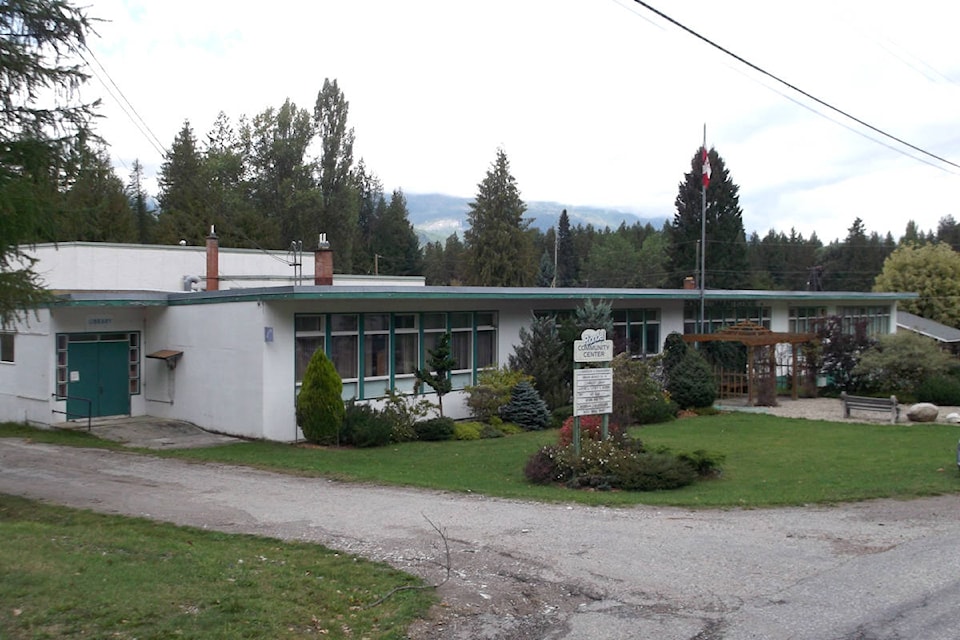by John Boivin
Local Journalism Initiative Reporter, Valley Voice
With fires, floods and extreme weather becoming more common, RDCK leaders and staff will be heading out to hard-to-access neighbourhoods and communities across the region over the fall and winter to talk about emergency planning.
That decision was made after a discussion at a recent Rural Affairs Committee meeting about evacuation planning for specific communities during this summer’s forest fires.
“I want directors to look into gaps in their areas, into dead-end roads, and are we falling short at being truly prepared to move people in a hurry?” asked Area A director Garry Jackman, launching the discussion. “Taking into account what we’ve seen from this year, and not too many years ago, other incidents – we need to be better prepared.”
Jackman said the notion that more review had to be done came to him after he and other Area A leaders looked at the plan for evacuating the community of Riondel, at the end of a 10-kilometre dead-end road on the east shore of Kootenay Lake.
Locals said they should use the Kootenay Lake ferry if necessary to move large numbers of people should the tiny community be cut off from the highway by wildfire. But the thought exercise quickly revealed some problematic logistical details.
“We know the lake level, and we know the level of the local dock, but we couldn’t get people up or down off the plank onto the ferry without ladders or hoisting… and there’s no money for that.”
It’s just one gap of many, said Jackman, some big, some ridiculously small. So he called on all his fellow directors to review local plans they may have for possible problems.
Ten problem communities
It turns out the RDCK Emergency Operations Centre has already identified 10 communities that would present challenges for evacuation – not only Riondel, but also Glade, Harrop-Procter, Wyndell and others.
Those plans outline at a high level how the evacuation would take place, identifying unique factors in each community, to inform the overall evacuation process.
RDCK officials said while it’s great communities are coming up with plans, over-planning doesn’t work in a volatile and dynamic emergency.
“Having plans that are very detailed for a given event have been found to be not very useful for planning,” said Johnson.
In the case of Riondel, more likely evacuation scenarios would involve getting people out of the community before it gets cut off by fire, he said, or waiting for BCWS to clear the road to allow evacuation to proceed.
Anxiety grows in vacuum
But the idea that ‘the plans are in place’ is a tough sell when forest fires are actively threatening a community.
“It’s not easy as a politician to say to residents, ‘don’t worry we have a robust system, hang on,’ which is often my short answer,” said Area D director Aimee Watson. “And I do fully trust our system … I have so much faith in our Emergency Operations Centre.”
“Saying to the people ‘we have it covered’ doesn’t quite cover it,” agreed Area F director Tom Newell. “In the longer term, how can we support people’s peace of mind through some sort of outreach?”
Turns out the answer to anxiety is planning and involvement. To that end, emergency officials have developed the Neighbourhood Emergency Preparedness Program (NEPP) to help communities help themselves.
“It’s going to be the backbone of our emergency program. It is the public-facing side,” said Chris Johnson, the RDCK’s emergency program manager. “It allows people to plan themselves what their plans are. And it gets beyond the idea of ‘what are you going to do for us in this situation?’
“Everyone has to own it. We are really trying to provide those tools.”
Over the coming months, RDCK electoral area directors and emergency officials will hold virtual or real-time community workshops (depending on COVID) to engage people in preparing NEPPs for emergencies.
“We will be able to go out and support those communities becoming prepared. And it’s more of a ‘facilitation’ role not a ‘doing’ role,” the manager said.
It’s also the way for better mental health in these stressful times.
“One of the findings, from [a United Nations study] on down, is communities have to be prepared for themselves, because that’s the only way they are going to feel well prepared,” said Johnson.
“We can do all the work we want to do in the background, but if the residents still feel anxiety because they don’t know what the plan is there, then we are arguably not doing our job well enough,” he said.
Johnson, who lives on a limited-access road himself, said local knowledge and decision-making can free up resources for officials to deal with other problems.
“If a community on a dead-end road has engaged in a community preparedness program, and they know ‘Old Mr. and Mrs. Johnston don’t have a car or a vehicle, and need to be evacuated,’ then maybe the neighbours know that’s who they are taking out.
“That allows our responding agencies to focus in on those unique situations that might come up during an emergency, that may free them up for what may occur that was unplanned.”
Directors will review existing Neighbourhood Plans and begin to arrange community meetings about the evacuations – after we get through this fire season.
You can find out more about the NEPP and RDCK emergency planning yourself at www.rdck.ca under Emergency Management.
